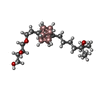Entry Database : PDB / ID : 3vjsTitle Vitamin D receptor complex with a carborane compound Vitamin D3 receptor peptide from Mediator of RNA polymerase II transcription subunit 1 Keywords / / / Function / homology Function Domain/homology Component
/ / / / / / / / / / / / / / / / / / / / / / / / / / / / / / / / / / / / / / / / / / / / / / / / / / / / / / / / / / / / / / / / / / / / / / / / / / / / / / / / / / / / / / / / / / / / / / / / / / / / / / / / / / / / / / / / / / / / / / / / / / / / / / / / / / / / / / / / / / Biological species Rattus norvegicus (Norway rat)Homo sapiens (human)Method / / / Resolution : 1.93 Å Authors Fujii, S. / Masuno, M. / Kagechika, H. / Nakabayashi, M. / Ito, N. Journal : J.Am.Chem.Soc. / Year : 2011Title : Boron Cluster-based Development of Potent Nonsecosteroidal Vitamin D Receptor Ligands: Direct Observation of Hydrophobic Interaction between Protein Surface and CarboraneAuthors : Fujii, S. / Masuno, H. / Taoda, Y. / Kano, A. / Wongmayura, A. / Nakabayashi, M. / Ito, N. / Shimizu, M. / Kawachi, E. / Hirano, T. / Endo, Y. / Tanatani, A. / Kagechika, H. History Deposition Oct 31, 2011 Deposition site / Processing site Revision 1.0 Feb 8, 2012 Provider / Type Revision 1.1 Nov 8, 2023 Group Data collection / Database references ... Data collection / Database references / Derived calculations / Refinement description Category chem_comp_atom / chem_comp_bond ... chem_comp_atom / chem_comp_bond / database_2 / pdbx_initial_refinement_model / struct_ref_seq_dif / struct_site Item _database_2.pdbx_DOI / _database_2.pdbx_database_accession ... _database_2.pdbx_DOI / _database_2.pdbx_database_accession / _struct_ref_seq_dif.details / _struct_site.pdbx_auth_asym_id / _struct_site.pdbx_auth_comp_id / _struct_site.pdbx_auth_seq_id
Show all Show less
 Open data
Open data Basic information
Basic information Components
Components Keywords
Keywords Function and homology information
Function and homology information
 Homo sapiens (human)
Homo sapiens (human) X-RAY DIFFRACTION /
X-RAY DIFFRACTION /  SYNCHROTRON /
SYNCHROTRON /  MOLECULAR REPLACEMENT / Resolution: 1.93 Å
MOLECULAR REPLACEMENT / Resolution: 1.93 Å  Authors
Authors Citation
Citation Journal: J.Am.Chem.Soc. / Year: 2011
Journal: J.Am.Chem.Soc. / Year: 2011 Structure visualization
Structure visualization Molmil
Molmil Jmol/JSmol
Jmol/JSmol Downloads & links
Downloads & links Download
Download 3vjs.cif.gz
3vjs.cif.gz PDBx/mmCIF format
PDBx/mmCIF format pdb3vjs.ent.gz
pdb3vjs.ent.gz PDB format
PDB format 3vjs.json.gz
3vjs.json.gz PDBx/mmJSON format
PDBx/mmJSON format Other downloads
Other downloads 3vjs_validation.pdf.gz
3vjs_validation.pdf.gz wwPDB validaton report
wwPDB validaton report 3vjs_full_validation.pdf.gz
3vjs_full_validation.pdf.gz 3vjs_validation.xml.gz
3vjs_validation.xml.gz 3vjs_validation.cif.gz
3vjs_validation.cif.gz https://data.pdbj.org/pub/pdb/validation_reports/vj/3vjs
https://data.pdbj.org/pub/pdb/validation_reports/vj/3vjs ftp://data.pdbj.org/pub/pdb/validation_reports/vj/3vjs
ftp://data.pdbj.org/pub/pdb/validation_reports/vj/3vjs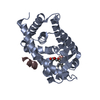
 Links
Links Assembly
Assembly
 Components
Components

 Homo sapiens (human) / References: UniProt: Q15648
Homo sapiens (human) / References: UniProt: Q15648 X-RAY DIFFRACTION / Number of used crystals: 1
X-RAY DIFFRACTION / Number of used crystals: 1  Sample preparation
Sample preparation SYNCHROTRON / Site:
SYNCHROTRON / Site:  Photon Factory
Photon Factory  / Beamline: BL-6A / Wavelength: 0.978 Å
/ Beamline: BL-6A / Wavelength: 0.978 Å Processing
Processing MOLECULAR REPLACEMENT
MOLECULAR REPLACEMENT Movie
Movie Controller
Controller






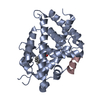

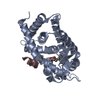
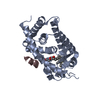
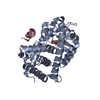

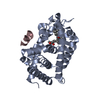


 PDBj
PDBj



